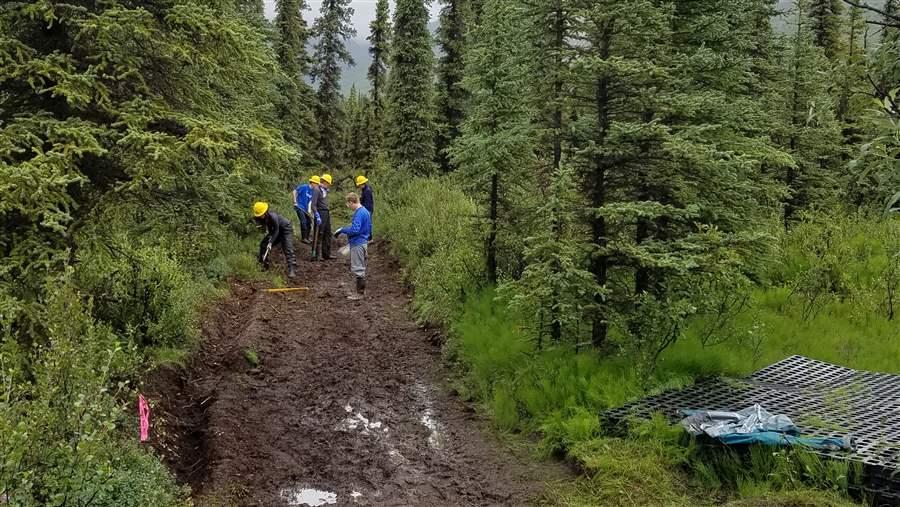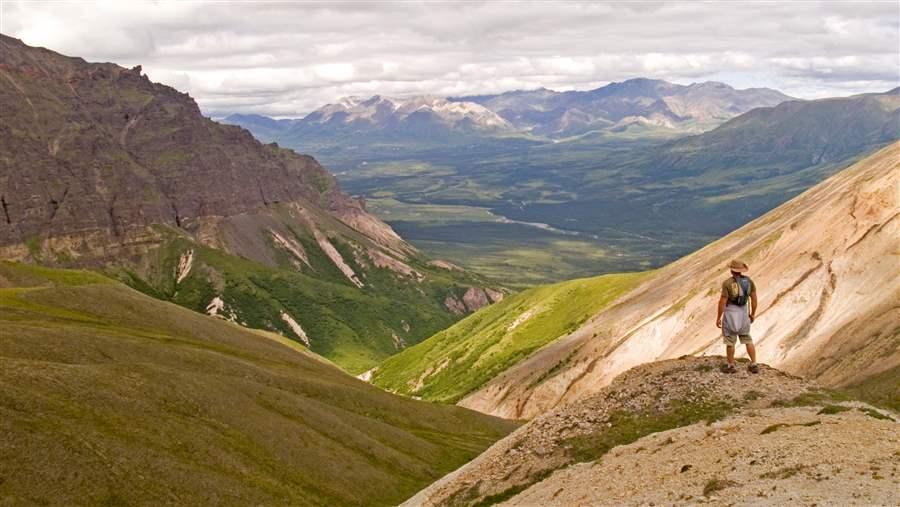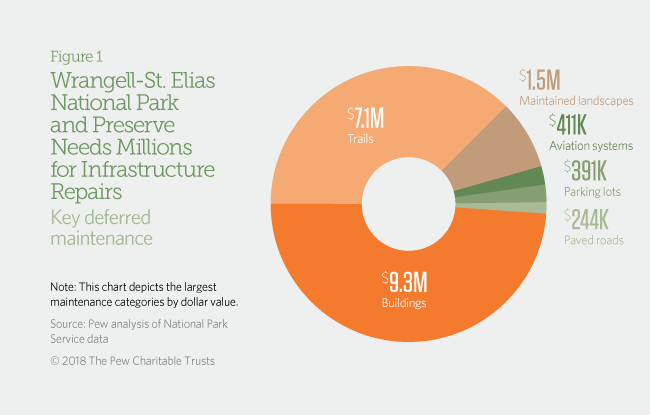Wrangell-St. Elias National Park and Preserve
Alaska
Pew created this case study using National Park Service deferred maintenance data issued in fiscal year 2015. The information listed here may no longer reflect the NPS site’s current condition or maintenance requirements. To find the most up-to-date information, please use the National Park Repair Needs tool.
Overview
Wrangell-St. Elias National Park and Preserve is America’s largest national park—and one of its most remote. More than 70 percent of its 13.2 million acres are designated as wilderness. Combined with neighboring Glacier Bay National Park and Preserve and Canadian conservation areas Kluane National Park and Reserve and Tatshenshini-Alsek Provincial Park, it is part of the world’s largest area of protected wilderness, which has earned it a designation as a World Heritage site.
Providing safe access to popular sites inside the park—such as Mount Wrangell, an active volcano—is a top priority for the National Park Service (NPS), but it is struggling to fund a $19.4 million maintenance backlog.

A Student Conservation Association crew prepares to install porous pavement on a damaged section of Caribou Creek Trail, part of the park’s more than $19.4 million in deferred maintenance.
Michael Roemer
Maintenance challenges
One of the park’s signature sites is the Kennecott Mines National Historic Landmark, listed on the National Register of Historic Places and considered the best example of early 20th-century copper mining.1 Historic buildings at Kennecott need $8.5 million in repairs to stabilize structures and ensure the safety of visitors and staff. Additional funds are needed for signage and interpretive media to help visitors better navigate the buildings and understand their significance.
Trails are essential access routes within Wrangell-St. Elias’ enormous landscape. The legislation that established the park, the Alaska National Interest Lands Conservation Act, includes provisions to preserve rural residents’ traditional ways of life. This includes use of cars and other motorized transportation to hunt, fish, and pick berries and for travel to and from remote villages and home sites. But this use of off-road vehicles in the park, particularly in wet areas, has caused $7.1 million in damage.
Airstrips are also vital for accessing the park’s wilderness and need $411,000 to repair. Without regular maintenance, the airstrips can quickly deteriorate and become unusable.
Considering the large size of Wrangell-St. Elias, it has very few National Park Service-maintained trails, cabins, and visitor infrastructure. This light touch gives park visitors the opportunity to explore true wildness on their own terms. However, it is imperative the park continues to maintain, and in some cases expand, the small amount of trails and infrastructure that exist to give these visitors a better chance of exploring what the park has to offer.Jared Steyaert, owner, Kennicott Wilderness Guides
Recommendations
To address the deferred maintenance needs at Wrangell-St. Elias and other NPS sites in Alaska and across the country, Congress should:
- Ensure that infrastructure initiatives include provisions to address park maintenance.
- Provide dedicated annual federal funding for national park repairs.
- Enact innovative policy reforms to ensure that deferred maintenance does not escalate.
- Provide more highway funding for NPS maintenance needs.
- Create more opportunities for public-private collaboration and donations to help restore park infrastructure.
Wrangell-St. Elias National Park and Preserve
2016
| Visitor spending | $124.7 million |
| Jobs created by visitor spending | 1,622 |
| Economic output | $177.6 million |
| Labor income | $59.1 million |
| Visits | 79,047 |
| Deferred maintenance (fiscal year 2015) | $19.4 million |
Sources: National Park Service, “Visitor Spending Effects,” accessed Oct. 6, 2017, https://www.nps.gov/subjects/socialscience/vse.htm; National Park Service, “NPS Deferred Maintenance Reports,” accessed Oct. 6, 2017, https://www.nps.gov/subjects/plandesignconstruct/defermain.htm.
© 2018 The Pew Charitable Trusts
The Pew Charitable Trusts works alongside the National Parks Conservation Association, the National Trust for Historic Preservation, and other national and local groups to ensure that our national park resources are maintained and protected for future generations to enjoy.
Endnotes
- National Park Service, “Kennecott National Historic Landmark,” accessed January 2017, https://www.nps.gov/wrst/learn/historyculture/kennecott-mines-national-historic-landmark.htm.


Alaska: Why We Need to Fix Our Parks, 2019


National Park Deferred Maintenance Needs











